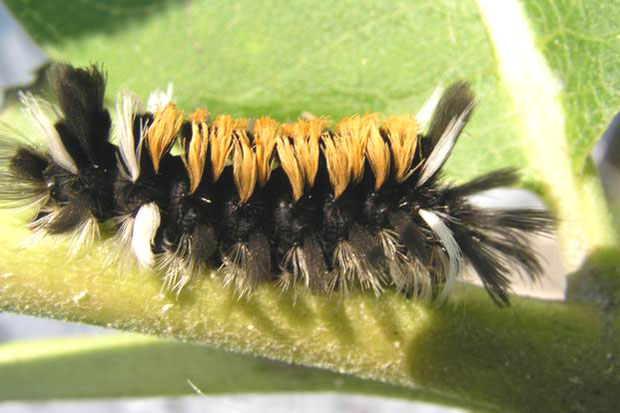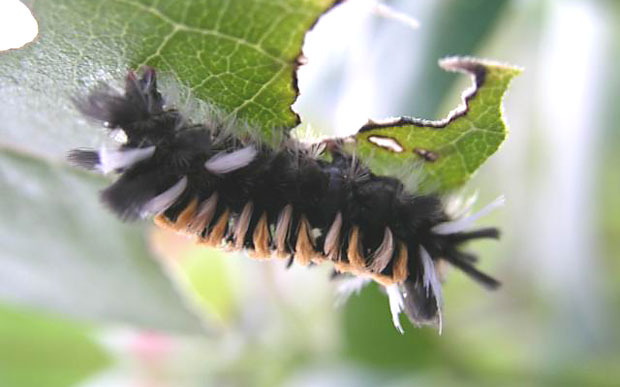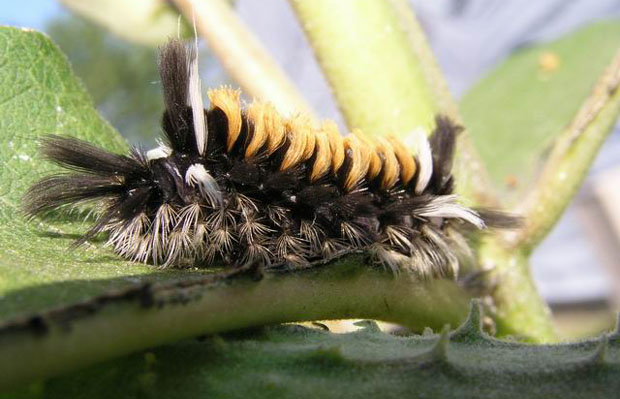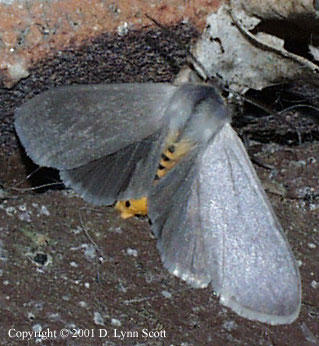Euchaetes egle
(Drury, 1773)


The Milkweed Tussock Moth larva feeds on milkweed. These caterpillars are frequently seen in the fall, feeding on their sappy host. Often there are quite a few on the same plant.
When disturbed, the caterpillars loosen their grip on the foliage, curl into a ball and fall to the ground.
Their choice of food plant, elongated black tufts and general colouration (black, orange-yellow and white) often results in their being mistaken for monarch butterfly caterpillars.


Images courtesy of Donald J. Herbert.
At maturity, these caterpillars pupate in a hairy cocoon and remain in a dormant state (diapause) throughout the winter.
This species is found in the eastern half of North America from Ontario to the Maritime Provinces and south to all but the southernmost portions of the Gulf States.
On September 14 I also received an email from Pat LaCotta:"I hope you can help me. I am a Kindergarten teacher who regularly collects Monarch butterfly caterpillars for her class each summer. I live in Central New York. This year, due to what I've heard was a freeze in Mexico, I hardly found any. Therefore, I have found another caterpillar on the milk weed which I was wondering if you could identify. There are so many of them. The caterpillar is black and furry with orange down the center of its back. Then, there are white furry spikes sticking out the front and back on both sides. I directed Pat to a page with this image of the adult moth, courtesy of Lynn Scott, Ottawa (Dunrobin), Ontario, Canada, 12/06/01, 3:12AM | 
|